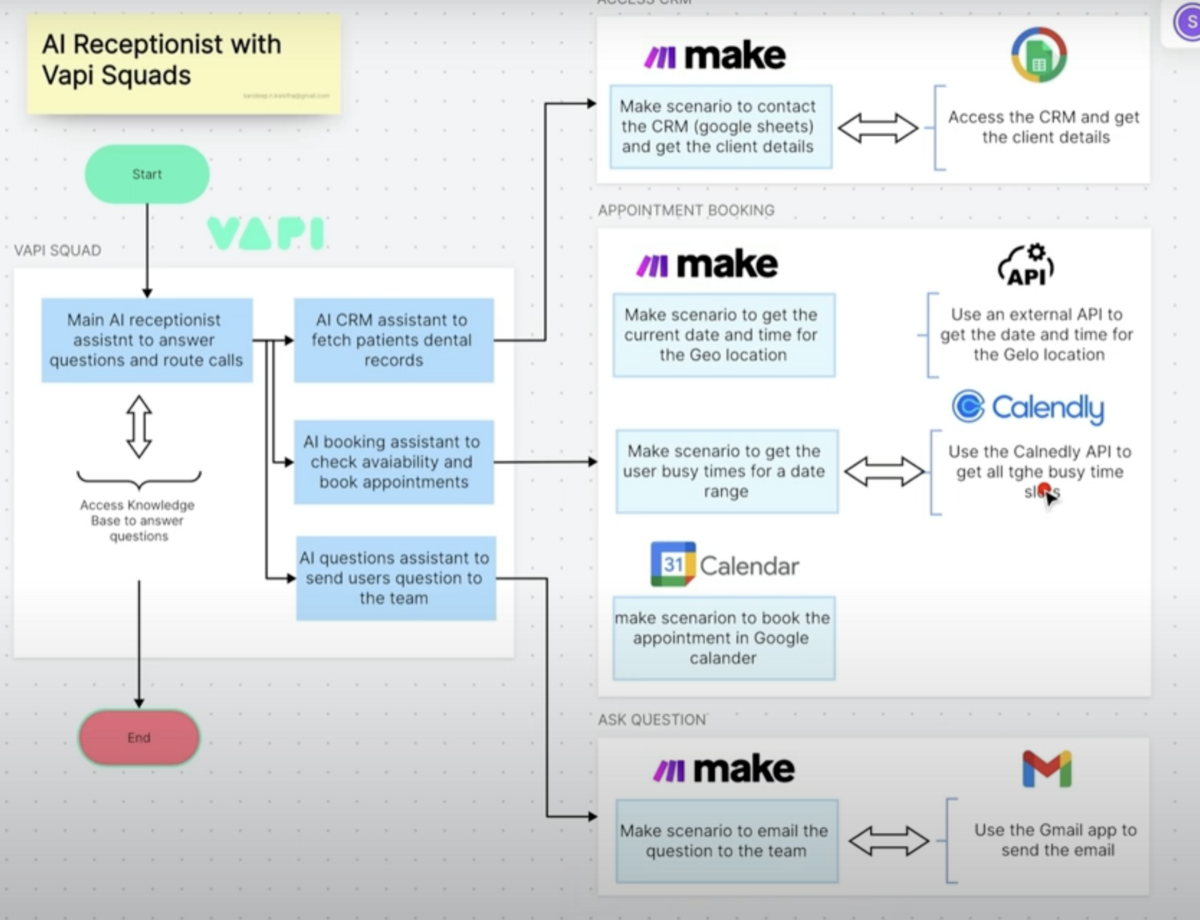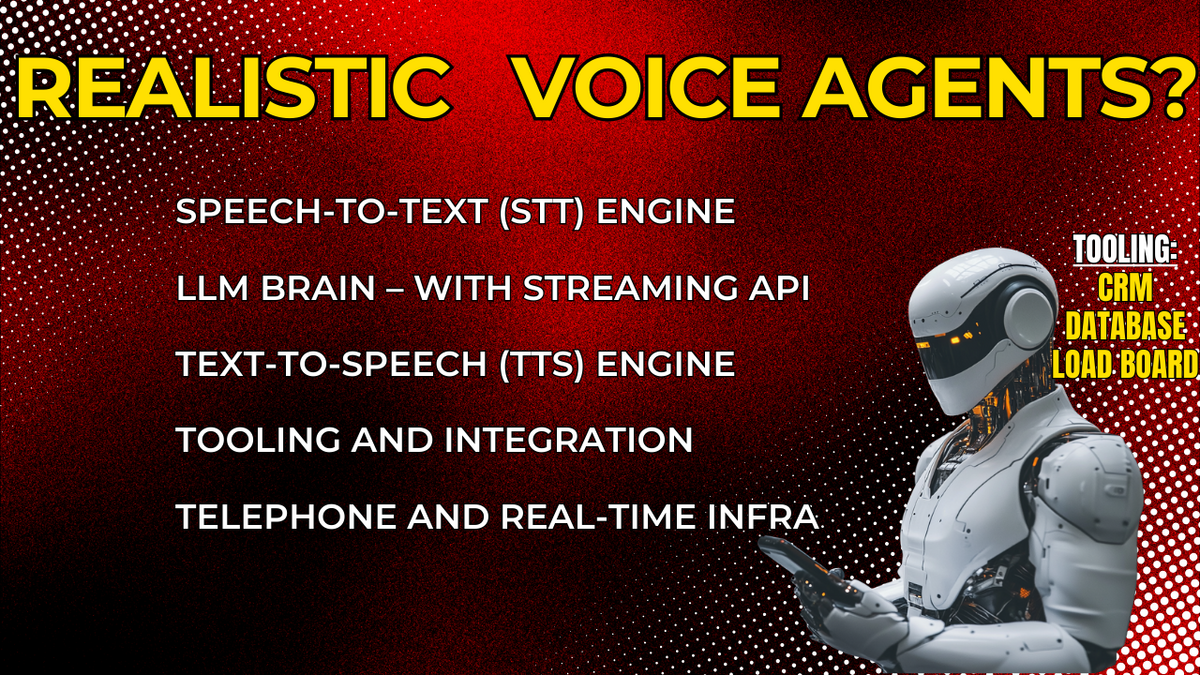Are you thinking an AI Voice Agent is just a fancy answering machine?
Let’s set the record straight. AI isn’t here to replace your receptionist - it’s here to handle the grunt work so your team can focus on what really matters.
In logistics, it can assign loads in seconds, cutting delays and errors.
In healthcare, it processes claims faster, so staff can spend more time with patients.
Here's a breakdown of how these AI Voice agents work:
Why Automate Phone Calls with AI?
Live phone calls can be expensive and time-consuming.
Yet, a direct human-to-human connection remains vital in many industries.
The challenge?
Doing it fast and accurately while juggling tasks like pulling data from your CRM or scheduling a pickup from your load board.
AI receptionists solve this by providing an always-on, real-time conversation engine that feels natural and reliably accesses the data you need.
The Core Components
Below is a summary of the five essential parts that power these AI phone assistants, highlighted in the video:
1. Speech-to-Text
Converts the caller’s spoken words into text.
Real-time performance is crucial. Models like Deepgram promise sub-3200ms conversion, ensuring near-live transcription.
2. LLM (Large Language Model)
Processes the transcribed text, uses tools (API function calling) and reasons through a response.
LLMs like ChatGPT/OpenAI, Calude have models that can stream out the first words almost instantly, enabling smooth, real-time conversations.
3. Text-to-Speech
Converts the AI’s text response into a natural-sounding voice.
High realism and low latency keep the caller engaged. Sonic is an example mentioned for its ability to deliver life-like voices quickly.
4. Departmentilizing AI for Specialized Tasks
AI "Squads" in Vapi for instance, break down tasks like CRM lookups, scheduling, or data retrieval into dedicated “departments” or mini-AI agents.

Keeping each assistant focused on its domain ensures consistent, reliable responses and simplifies setup. It’s similar to how calling a bank routes you to the right department.
5. Real-Time Telephony Platforms
Connect your AI assistant to an actual phone line.
Services like Twillio or Daily.co allow you to purchase a new number or use an existing one. This gives you control over costs, call routing, and integrations with your other communications tools.
How These Components Work Together
1. Caller Speaks: Their voice is transcribed in real time (Speech-to-Text).
2. LLM Interpretation: The transcription is sent to the AI model to interpret and formulate a response.
3. Real-Time Response: The AI’s text response is converted back into speech (Text-to-Speech) and played for the caller.
4. Specialized “Squads”: If data from your CRM or load board is needed, the AI routes the request to the right mini-AI “department” for accurate information.
5. Smooth Phone Integration: All of this is handled through a telephony platform, ensuring crystal-clear audio and minimal latency.
Why It’s Game-Changing
By blending high-accuracy speech-to-text, sophisticated language models, realistic text-to-speech, and specialized “squads,” businesses can save time, cut costs, and offer a better user experience.
Gone are the days of keeping customers on hold or fumbling through multiple software windows. An AI receptionist handles it all, delivering swift, precise information and even sounding convincingly human.
Save 6 Hours Per Week From Mundane Tasks
If you want to see real-world examples of where this tech shines and how you can implement it for your specific needs - here's a comprehensive guide that dives deeper into the technical setup, potential use cases, and best practices for fine-tuning your AI receptionist: https://guide.vladshostak.com/
